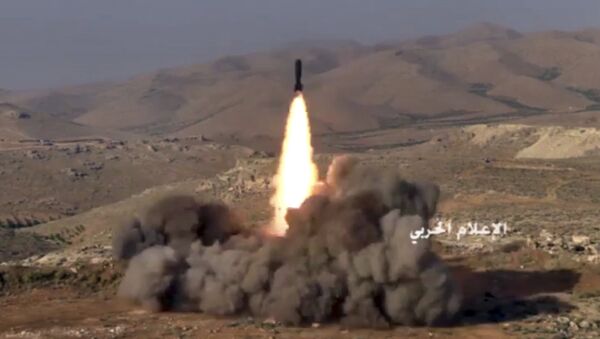According to a report by Jane’s Defense Weekly, the IAF is looking at 4,000 square meters’ worth of hardened aircraft shelter space spread across 20 different unnamed sites in a bid to protect aircraft like its valuable F-35I Adirs from enemy attack.
Citing a July 12 posting by USU Federal Business Opportunities, Janes noted the work will include 1.5 kilometers of taxiways, 3.3 kilometers of service roads, 1,900 square meters of utility tunnels and 5,600 square meters of storage buildings and other associated administrative buildings and auxiliary facilities.
The Jerusalem Post reported that Home Front Command Chief Major General Tamir Yadai warned last year that 2.5 million Israelis lack adequate protection from missiles that might be fired by Hezbollah, a Shiite militant group across the Blue Line in southern Lebanon, with whom Tel Aviv has fought several wars.
Israel sports a multi-layered missile defense system, including the short-range Iron Dome, the exoatmospheric Arrow system and the David’s Sling missile defense system, which is designed to intercept tactical ballistic missiles, medium- to long-range rockets and cruise missiles fired at ranges between 40 kilometers and 300 kilometers, according to the Jerusalem Post.
The US Army also practiced a rapid deployment of the Terminal High Altitude Area Defense (THAAD) system in Israel earlier this year, Sputnik reported.
Hezbollah and Israel last fought a war in 2006, in which the militant group stalled and fought off an Israeli invasion of southern Lebanon, leading to the present-day standoff over the Blue Line separating the two. During that conflict, Hezbollah launched roughly 4,000 rockets at Israeli territory, according to the Washington Post, most of which were artillery rockets used for mass bombardment and not guided weapons.
However, Hamas, the Palestinian militant group that governs the Gaza Strip, recently declared it had devised a tactic to overwhelm and overcome the Iron Dome, making the hardened shelters a wise consideration.
Just last month, the Israel Defense Forces conducted massive war games exercises that ran through a series of scenarios for a potential future conflict with Hezbollah, which the IDF command expects will include not only massive missile bombardments but an expanded front including the Syrian border as well.
As the possibility of a US war with Iran has simmered - something Israel’s anti-Tehran government has done little to cool down - a war of words has been exchanged between Tel Aviv and Hezbollah, with each threatening the other’s annihilation in the event of a conflict with Iran. Iran has been a key supporter of Hezbollah, and Israeli Prime Minister Benjamin Netanyahu regards the group as little more than a proxy force for Tehran.


